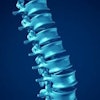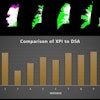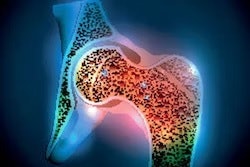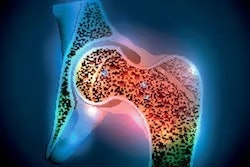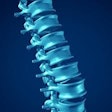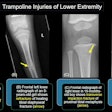Different hip flexion angles have little influence on lumbar spine bone mineral density measurements using dual energy x-ray absorptiometry (DEXA), according to a group in Fujian, China.
This is good news for technicians handling patients in pain or elderly patients with osteoporosis, wrote radiologist and lead author Lisheng Yan, MD, of the Second Affiliated Hospital of Fujian Medical University, and colleagues.
"Such situations have always been the subject of concern among imaging technicians since it is unclear whether a nonstandard posture can affect the measurement results, subsequently leading to misdiagnosis or missed diagnosis," the group wrote, in an article published September 12 in Open Medicine.
DEXA bone mineral density (BMD) measurements are essential for diagnosing osteoporosis and assessing the risk of osteoporotic fractures, the researchers explained. Standard protocols suggest positioning patients in a 90° hip flexion posture to optimize image quality, but achieving this posture can be difficult in patients due to the initial fracture or related pain, they noted.
To explore whether variations in hip flexion angle have an impact on lumbar BMD measurements using DEXA, the group analyzed scans obtained in 60 patients posed at three different hip flexion angles: 90°, 45°, and 0°. Participants (44 men, 16 women) were between 42 and 75 years old with an average body mass index of 22.4 kg/m2.
Highlights of the findings included the following:
- No statistically significant differences were observed in vertebral bone mineral content, vertebral BMD, and total vertebral body heights between the 90° and the 45° angles, as well as the 90° and the 0° hip flexion postures.
- A BMD correlation analysis yielded coefficients of 0.998 and 0.996 between the 90° and the 45° angles, as well as the 90° and the 45° hip flexion postures. Additionally, the results showed significant correlations between the 90° and the 45° and 0° angles.
- There were no significant differences in the diagnostic outcomes of BMD results between both the 90° and the 45° angles as well as the 90° and the 0° hip flexion postures.
"The current results suggested that there is no significant correlation between the lumbar BMD measurement results and the variations in hip flexion angles," the group wrote.
The authors noted that during the study, the 45° and 0° hip flexion angles were not only more practical but also significantly improved work efficiency since they eliminated the need for a hip positioning device, as well as shortened the scan time.
Moreover, they noted that predictive studies suggest there will be about six million cases of osteoporosis in China by 2050 and that DEXA is currently one of the primary means for the diagnosis.
"We believe that technicians should intuitively decide which posture to adopt on a case-to-case basis according to their patients’ specific situations," the group concluded.
The full article is available here.
